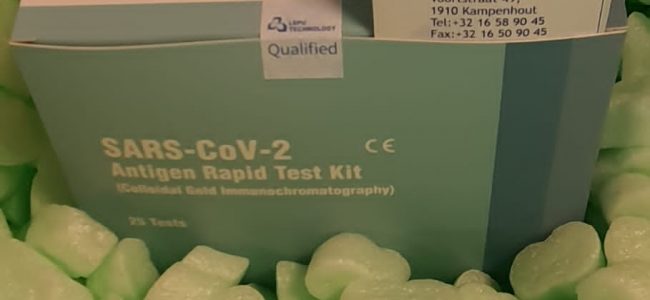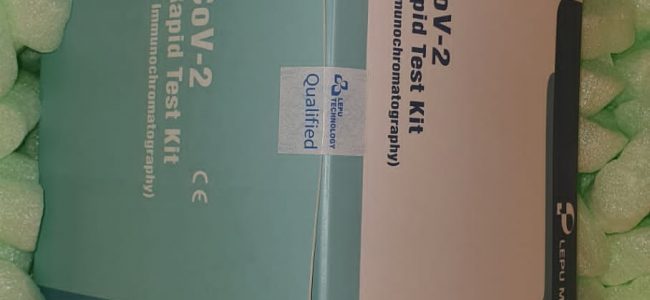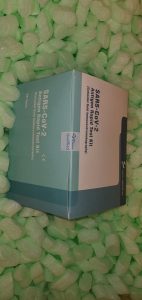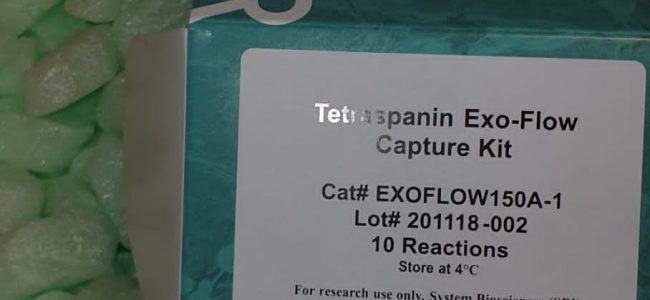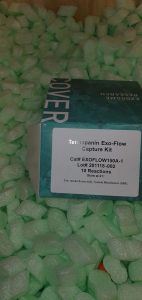To examine the impact and mechanism of sodium hydrosulfide on rat epidermal cells intervened by burned rat serum. The experimental technique was used. Ten eight-month-old male Sprague-Dawley (SD) rats have been taken to arrange regular rat serum (hereinafter known as regular serum), 30 eight-month-old male SD rats have been taken to arrange burn rat serum (hereinafter known as burn serum) 6 hours after full-thickness burn, and the third passage of epidermal cells collected from 10 one-day-old SD rats have been used for the experiments.
The cells have been divided into regular serum group handled with regular serum and burn serum group handled with burn serum. Cell counting package eight technique was used to detect cell survival fee after 1, 2, 4, 6, and eight h of tradition, respectively, to display the following intervention time of burn serum. The cells have been divided into burn serum management group handled solely with burn serum and 50, 100, 150, 200, 250 μmol/L sodium hydrosulfide teams handled with burn serum+sodium hydrosulfide at corresponding last molarity.
After 30 min of tradition following the burn serum intervention, the cell survival fee was measured as above to display the following intervention focus of sodium hydrosulfide. The cells have been divided into burn serum management group handled with burn serum solely and sodium hydrosulfide solely group, glibenclamide solely group, and sodium hydrosulfide+glibenclamide group handled with burn serum+corresponding reagents. After 5, 10, 15 min of tradition following the burn serum intervention, the cell survival fee was measured as above to display the following intervention time of glibenclamide. The cells have been divided into burn serum management group handled with burn serum and sodium hydrosulfide solely group, glibenclamide solely group, and sodium hydrosulfide+glibenclamide group handled with burn serum+corresponding reagents.
After finishing corresponding tradition time of every reagent, the mitochondria have been extracted to detect cytochrome c oxidase (CCO) exercise utilizing a spectrophotometer, and the protein expression stage of adenosine triphosphate (ATP)-sensitive potassium channel was detected by Western blotting. Except for the quantity of samples for ATP-sensitive potassium channel protein detection, which was 3, the quantity of samples for the opposite indicators was 10. Data have been statistically analyzed with evaluation of variance for factorial design, one-way evaluation of variance, least important distinction (LSD)-t take a look at, LSD take a look at, and Bonferroni correction.
Compared with that of regular serum group, the survival fee of cells was considerably decreased in burn serum group after solely 4 and 6 h of tradition (t=4.02, 6.42, P<0.05). There have been statistically important variations among the many time factors inside regular serum group and burn serum group in survival fee of cells (F=19.74, 4.48, P<0.05 or P<0.01). Culture of Four h was chosen as the following intervention time of burn serum. After 30 min of tradition following the burn serum intervention, in contrast with that of burn serum management group, solely the 150, 200, 250 μmol/L sodium hydrosulfide teams had a considerably larger survival fee of cells (P<0.05), thus 150 μmol/L was chosen as the following intervention focus of sodium hydrosulfide.
Compared with that of burn serum management group, the survival fee of cells decreased considerably in glibenclamide solely group after 5 and 15 min of tradition following the burn serum intervention (P<0.05) and elevated considerably in glibenclamide solely group after 10 min of tradition following the burn serum intervention and sodium hydrosulfide solely group at every time level (P<0.05 or P<0.01). The survival fee of cells in hydrosulfide+glibenclamide group was considerably decrease than that of sodium hydrosulfide solely group at every time level (P<0.05). There have been statistically important variations among the many time factors inside glibenclamide solely group in survival fee of cells (F=11.81, P<0.01).
Culture of 5 min was chosen as the following intervention time of glibenclamide. After 35 min of tradition following the burn serum intervention, in contrast with (1.62±0.08) nmol·min(-1)·mg(-1) and 0.68±0.06 in burn serum management group, the CCO exercise of cells and the protein expression stage of ATP-sensitive potassium channel have been considerably elevated in sodium hydrosulfide solely.
group ((1.99±0.09) nmol·min(-1)·mg(-1) and 0.93±0.01, P<0.01) and considerably decreased in glibenclamide solely group ((1.44±0.09) nmol·min(-1)·mg(-1) and 0.60±0.01, P<0.01); the CCO exercise of cells and the protein expression stage of ATP-sensitive potassium channel in sodium hydrosulfide+glibenclamide group ((1.79±0.06) nmol·min(-1)·mg(-1) and 0.74±0.07) was considerably decrease than these of sodium hydrosulfide solely group (P<0.05 or P<0.01).
Sodium hydrosulfide can enhance the survival fee of rat epidermal cells after the intervention of burn serum, which is expounded to the alleviation of epidermal cell mitochondrial injury and induced by ATP-sensitive potassium ion channel.
![[Effects and mechanism of sodium hydrosulfide on rat epidermal cells intervened by burned rat serum]](http://artelis.be/wp-content/uploads/2021/03/IMG-20201217-WA0003-300x142.jpg)
Effects of rutin on osteoblast MC3T3-E1 differentiation, ALP exercise and Runx2 protein expression
As a flavonoid, rutin has been discovered to have a variety of organic features, comparable to resisting irritation and oxidation, and stopping cerebral hemorrhage and hypertension. It has been discovered to play an necessary function in osteoporosis and different orthopedic illnesses lately. MC3T3-E1 cells have been randomly divided right into a management group, a rutin-1 group (0.01 mmol/L), a rutin-2 group (0.05 mmol/L) and a rutin-Three group (0.1 mmol/L). Osteogenic differentiation of cells was induced by osteogenic induction fluid. The management group was handled with the utmost dose of drug solvent. 2~Three days later, the solvent was changed with contemporary osteogenic induction fluid containing rutin.
After a sure interval of routine tradition, the cells have been collected for subsequent experiments. The expression of Runx2 gene in cells in all teams was detected by Real-time PCR; the expression of Runx2 protein was detected by Western blot and immunocytochemistry; the exercise of ALP was detected by reagent package technique; osteogenic differentiation was analyzed by alizarin purple staining. The outcomes of Real-time PCR confirmed that, in contrast with the management group, the therapy of cells with rutin can considerably enhance the expression of Runx2 gene (p<0.05); the upper the focus, the upper the expression of Runx2 gene, and important variations have been discovered amongst teams wherein totally different concentrations have been used (p<0.05); the outcomes of Western blot and IHC confirmed that the expression development of Runx2 protein in every group was in step with PCR outcomes.
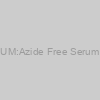 RAT SERUM:Azide Free Serum Products |
|
GWB-Q00026 |
GenWay Biotech |
100 ml |
Ask for price |
 MOUSE SERUM:Azide Free Serum Products |
|
GWB-Q00010 |
GenWay Biotech |
5 ml |
Ask for price |
 MOUSE SERUM:Azide Free Serum Products |
|
GWB-Q00011 |
GenWay Biotech |
10 ml |
Ask for price |
 MOUSE SERUM:Azide Free Serum Products |
|
GWB-Q00012 |
GenWay Biotech |
50 ml |
Ask for price |
 MOUSE SERUM:Azide Free Serum Products |
|
GWB-Q00013 |
GenWay Biotech |
100 ml |
Ask for price |
 MOUSE SERUM:Azide Free Serum Products |
|
GWB-Q00014 |
GenWay Biotech |
500 ml |
Ask for price |
 RABBIT SERUM:Azide Free Serum Products |
|
GWB-Q00019 |
GenWay Biotech |
20 ml |
Ask for price |
 RABBIT SERUM:Azide Free Serum Products |
|
GWB-Q00020 |
GenWay Biotech |
100 ml |
Ask for price |
 GUINEA PIG SERUM WITH 0.09% AZIDE Serum Products |
|
GWB-Q00004 |
GenWay Biotech |
5 ml |
Ask for price |
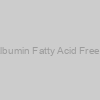 Bovine Serum Albumin Fatty Acid Free Reagent Grade |
|
GWB-F06E29 |
GenWay Biotech |
1 kg |
Ask for price |
 Guinea Pig Serum |
|
abx810186-10nmol |
Abbexa |
10 nmol |
EUR 650 |
 Guinea Pig Serum |
|
abx810186-5nmol |
Abbexa |
5 nmol |
EUR 412.5 |
 - for Serum or Plasma) Exo-Flow 2.0 Basic Kit without antibody (Streptavidin beads + reagents) - for Serum or Plasma |
|
EXOFLOW2-BASICA-SP |
SBI |
30 rxn |
EUR 1201.2 |
|
|
 Bovine Serum Albumin Fatty Acid Protease Free Reagent Grade |
|
GWB-DCC190 |
GenWay Biotech |
1 kg |
Ask for price |
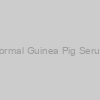 Normal Guinea Pig Serum |
|
88-NP25 |
Fitzgerald |
50 ml |
EUR 270 |
|
|
|
Description: Normal Guinea Pig Serum |
 Normal Guinea Pig Serum |
|
88R-1016 |
Fitzgerald |
5 ml |
EUR 122 |
|
|
|
Description: Normal Guinea Pig Serum which has been lipid extracted and dialyzed against 10 mM Sodium Phosphate, 0.15 M Sodium Chloride, pH 7.2 |
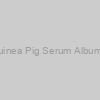 Guinea Pig Serum Albumin |
|
30R-3306 |
Fitzgerald |
10 mg |
EUR 303 |
|
|
|
Description: Purified native Guinea Pig serum albumin |
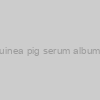 Guinea pig serum albumin |
|
CSB-NP002001Gp |
Cusabio |
10mg |
Ask for price |
 Guinea Pig Complement Serum |
|
32R-CP004 |
Fitzgerald |
5 ml |
EUR 447 |
|
|
|
Description: Purified Guinea Pig Complement adsorbed with mouse cells |
 Guinea Pig Complement Serum |
|
32R-CP006 |
Fitzgerald |
3 ml |
EUR 98 |
|
|
|
Description: Purified Guinea Pig Complement isolated from the blood of normal Hartley guinea pigs |
 Guinea Pig Complement Serum |
|
32R-CP007 |
Fitzgerald |
25 ml |
EUR 807.6 |
|
Description: Purified Guinea Pig Complement adsorbed with sheep red blood cells |
 Non-sterile guinea pig serum |
|
GPS05-0050 |
Equitech |
50 ml |
EUR 277.68 |
|
|
 Non-sterile guinea pig serum |
|
GPS05-0100 |
Equitech |
100 ml |
EUR 332.28 |
|
|
 Non-sterile guinea pig serum |
|
GPS05-0500 |
Equitech |
500 ml |
EUR 667.68 |
|
|
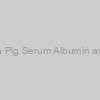 Guinea Pig Serum Albumin antibody |
|
70R-15101 |
Fitzgerald |
100 ug |
EUR 302 |
|
|
|
Description: Rabbit polyclonal Guinea Pig Serum Albumin antibody |
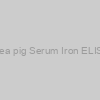 Guinea pig Serum Iron ELISA kit |
|
E05S0273-192T |
BlueGene |
192 tests |
EUR 1524 |
|
|
|
Description: A competitive ELISA for quantitative measurement of Guinea pig Serum Iron in samples from blood, plasma, serum, cell culture supernatant and other biological fluids. This is a high quality ELISA kit developped for optimal performance with samples from the particular species. |
 Guinea pig Serum Iron ELISA kit |
|
E05S0273-48 |
BlueGene |
1 plate of 48 wells |
EUR 624 |
|
|
|
Description: A competitive ELISA for quantitative measurement of Guinea pig Serum Iron in samples from blood, plasma, serum, cell culture supernatant and other biological fluids. This is a high quality ELISA kit developped for optimal performance with samples from the particular species. |
 Guinea pig Serum Iron ELISA kit |
|
E05S0273-96 |
BlueGene |
1 plate of 96 wells |
EUR 822 |
|
|
|
Description: A competitive ELISA for quantitative measurement of Guinea pig Serum Iron in samples from blood, plasma, serum, cell culture supernatant and other biological fluids. This is a high quality ELISA kit developped for optimal performance with samples from the particular species. |
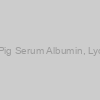 Guinea Pig Serum Albumin, Lyophilized |
|
22070080-1 |
Glycomatrix |
50 mg |
EUR 168.11 |
 Guinea Pig Serum Albumin, Lyophilized |
|
22070080-2 |
Glycomatrix |
100 mg |
EUR 272.69 |
 Guinea Pig Serum Albumin, Lyophilized |
|
22070080-3 |
Glycomatrix |
500 mg |
EUR 728.41 |
 Guinea Pig Serum Albumin, Lyophilized |
|
22070080-4 |
Glycomatrix |
1000 mg |
EUR 1147.51 |
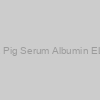 Guinea Pig Serum Albumin ELISA kit |
|
E01A42617 |
BlueGene |
96T |
EUR 700 |
|
Description: ELISA |
 Guinea pig Serum Albumin ELISA kit |
|
E05S0014-192T |
BlueGene |
192 tests |
EUR 1524 |
|
|
|
Description: A competitive ELISA for quantitative measurement of Guinea pig Serum Albumin in samples from blood, plasma, serum, cell culture supernatant and other biological fluids. This is a high quality ELISA kit developped for optimal performance with samples from the particular species. |
 Guinea pig Serum Albumin ELISA kit |
|
E05S0014-48 |
BlueGene |
1 plate of 48 wells |
EUR 624 |
|
|
|
Description: A competitive ELISA for quantitative measurement of Guinea pig Serum Albumin in samples from blood, plasma, serum, cell culture supernatant and other biological fluids. This is a high quality ELISA kit developped for optimal performance with samples from the particular species. |
 Guinea pig Serum Albumin ELISA kit |
|
E05S0014-96 |
BlueGene |
1 plate of 96 wells |
EUR 822 |
|
|
|
Description: A competitive ELISA for quantitative measurement of Guinea pig Serum Albumin in samples from blood, plasma, serum, cell culture supernatant and other biological fluids. This is a high quality ELISA kit developped for optimal performance with samples from the particular species. |
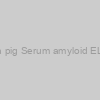 Guinea pig Serum amyloid ELISA kit |
|
E05S0228-192T |
BlueGene |
192 tests |
EUR 1524 |
|
|
|
Description: A competitive ELISA for quantitative measurement of Guinea pig Serum amyloid in samples from blood, plasma, serum, cell culture supernatant and other biological fluids. This is a high quality ELISA kit developped for optimal performance with samples from the particular species. |
 Guinea pig Serum amyloid ELISA kit |
|
E05S0228-48 |
BlueGene |
1 plate of 48 wells |
EUR 624 |
|
|
|
Description: A competitive ELISA for quantitative measurement of Guinea pig Serum amyloid in samples from blood, plasma, serum, cell culture supernatant and other biological fluids. This is a high quality ELISA kit developped for optimal performance with samples from the particular species. |
 Guinea pig Serum amyloid ELISA kit |
|
E05S0228-96 |
BlueGene |
1 plate of 96 wells |
EUR 822 |
|
|
|
Description: A competitive ELISA for quantitative measurement of Guinea pig Serum amyloid in samples from blood, plasma, serum, cell culture supernatant and other biological fluids. This is a high quality ELISA kit developped for optimal performance with samples from the particular species. |
) Guinea Pig Serum Albumin antibody (HRP) |
|
60R-1144 |
Fitzgerald |
100 ug |
EUR 302 |
|
|
|
Description: Rabbit polyclonal Guinea Pig Serum Albumin antibody (HRP) |
) Guinea Pig Serum Albumin antibody (FITC) |
|
60R-1145 |
Fitzgerald |
100 ug |
EUR 302 |
|
|
|
Description: Rabbit polyclonal Guinea Pig Serum Albumin antibody (FITC) |
) Guinea Pig Serum Albumin antibody (biotin) |
|
60R-1146 |
Fitzgerald |
100 ug |
EUR 302 |
|
|
|
Description: Rabbit polyclonal Guinea Pig Serum Albumin antibody (biotin) |
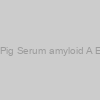 Guinea Pig Serum amyloid A ELISA kit |
|
E01A42729 |
BlueGene |
96T |
EUR 700 |
|
Description: ELISA |
 ELISA Kit) Guinea pig Serum Albumin(BSA) ELISA Kit |
|
NSL1189Gp |
Sunlong |
96T |
EUR 528 |
|
|
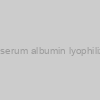 Guinea pig serum albumin lyophilized powder |
|
GPSA62-0050 |
Equitech |
50mg |
EUR 460.2 |
|
|
 Guinea pig serum albumin lyophilized powder |
|
GPSA62-0100 |
Equitech |
100mg |
EUR 611.52 |
|
|
 Guinea pig serum albumin lyophilized powder |
|
GPSA62-0500 |
Equitech |
500mg |
EUR 1361.88 |
|
|
 Guinea pig serum albumin lyophilized powder |
|
GPSA62-1000 |
Equitech |
1gm |
EUR 2388.36 |
|
|
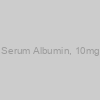 Guinea Pig Serum Albumin, 10mg/mL, Sterile |
|
31114007-1 |
Glycomatrix |
1 mL |
EUR 87.58 |
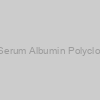 Guinea Pig Serum Albumin Polyclonal Antibody |
|
A57556 |
EpiGentek |
-
Ask for price
-
Ask for price
-
Ask for price
-
Ask for price
|
- 100 µg
- 20 ul
- 50 ul
- 100 ul
|
 Mixed breed, Mouse serum -ve & G. Pig +ve) Guinea Pig control serum (non-immunized) Mixed breed, Mouse serum -ve & G. Pig +ve |
|
NGPS-25-GM |
Alpha Diagnostics |
25 ml |
EUR 489.6 |
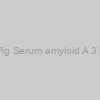 Guinea Pig Serum amyloid A 3 ELISA kit |
|
E01A42730 |
BlueGene |
96T |
EUR 700 |
|
Description: ELISA |
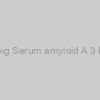 Guinea pig Serum amyloid A 3 ELISA kit |
|
E05S0229-192T |
BlueGene |
192 tests |
EUR 1524 |
|
|
|
Description: A competitive ELISA for quantitative measurement of Guinea pig Serum amyloid A 3 in samples from blood, plasma, serum, cell culture supernatant and other biological fluids. This is a high quality ELISA kit developped for optimal performance with samples from the particular species. |
 Guinea pig Serum amyloid A 3 ELISA kit |
|
E05S0229-48 |
BlueGene |
1 plate of 48 wells |
EUR 624 |
|
|
|
Description: A competitive ELISA for quantitative measurement of Guinea pig Serum amyloid A 3 in samples from blood, plasma, serum, cell culture supernatant and other biological fluids. This is a high quality ELISA kit developped for optimal performance with samples from the particular species. |
 Guinea pig Serum amyloid A 3 ELISA kit |
|
E05S0229-96 |
BlueGene |
1 plate of 96 wells |
EUR 822 |
|
|
|
Description: A competitive ELISA for quantitative measurement of Guinea pig Serum amyloid A 3 in samples from blood, plasma, serum, cell culture supernatant and other biological fluids. This is a high quality ELISA kit developped for optimal performance with samples from the particular species. |
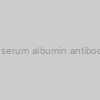 Guinea Pig serum albumin antibody ELISA kit |
|
E01A42787 |
BlueGene |
96T |
EUR 700 |
|
Description: ELISA |
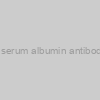 Guinea pig serum albumin antibody ELISA kit |
|
E05S0304-192T |
BlueGene |
192 tests |
EUR 1524 |
|
|
|
Description: A competitive ELISA for quantitative measurement of Guinea pig serum albumin antibody in samples from blood, plasma, serum, cell culture supernatant and other biological fluids. This is a high quality ELISA kit developped for optimal performance with samples from the particular species. |
 Guinea pig serum albumin antibody ELISA kit |
|
E05S0304-48 |
BlueGene |
1 plate of 48 wells |
EUR 624 |
|
|
|
Description: A competitive ELISA for quantitative measurement of Guinea pig serum albumin antibody in samples from blood, plasma, serum, cell culture supernatant and other biological fluids. This is a high quality ELISA kit developped for optimal performance with samples from the particular species. |
 Guinea pig serum albumin antibody ELISA kit |
|
E05S0304-96 |
BlueGene |
1 plate of 96 wells |
EUR 822 |
|
|
|
Description: A competitive ELISA for quantitative measurement of Guinea pig serum albumin antibody in samples from blood, plasma, serum, cell culture supernatant and other biological fluids. This is a high quality ELISA kit developped for optimal performance with samples from the particular species. |
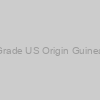 Innovative Grade US Origin Guinea Pig Serum |
|
IGGPSER1000ML |
Innovative research |
each |
EUR 12400 |
|
|
|
Description: Innovative Grade US Origin Guinea Pig Serum |
 Innovative Grade US Origin Guinea Pig Serum |
|
IGGPSER100ML |
Innovative research |
each |
EUR 1395 |
|
|
|
Description: Innovative Grade US Origin Guinea Pig Serum |
 Innovative Grade US Origin Guinea Pig Serum |
|
IGGPSER10ML |
Innovative research |
each |
EUR 163 |
|
|
|
Description: Innovative Grade US Origin Guinea Pig Serum |
 Innovative Grade US Origin Guinea Pig Serum |
|
IGGPSER25ML |
Innovative research |
each |
EUR 388 |
|
|
|
Description: Innovative Grade US Origin Guinea Pig Serum |
 Innovative Grade US Origin Guinea Pig Serum |
|
IGGPSER500ML |
Innovative research |
each |
EUR 6588 |
|
|
|
Description: Innovative Grade US Origin Guinea Pig Serum |
 Innovative Grade US Origin Guinea Pig Serum |
|
IGGPSER50ML |
Innovative research |
each |
EUR 737 |
|
|
|
Description: Innovative Grade US Origin Guinea Pig Serum |
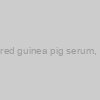 Sterile filtered guinea pig serum, 0.2 micron |
|
SGP30-0050 |
Equitech |
50 ml |
EUR 193.75 |
|
|
 Sterile filtered guinea pig serum, 0.2 micron |
|
SGP30-0100 |
Equitech |
100 ml |
EUR 256.25 |
|
|
 Sterile filtered guinea pig serum, 0.2 micron |
|
SGP30-0500 |
Equitech |
500 ml |
EUR 775 |
|
|
 ELISA Kit) Guinea pig Serum Amyloid A(SAA) ELISA Kit |
|
NSL0280Gp |
Sunlong |
96T |
EUR 528 |
|
|
 ELISA Kit) Guinea pig Serum Amyloid A2 (SAA2) ELISA Kit |
|
abx357760-96tests |
Abbexa |
96 tests |
EUR 990 |
|
|
 ELISA Kit) Guinea pig Serum Response Factor (SRF) ELISA Kit |
|
abx357768-96tests |
Abbexa |
96 tests |
EUR 990 |
|
|
 ELISA kit) Guinea Pig Serum response factor(SRF) ELISA kit |
|
E01A42879 |
BlueGene |
96T |
EUR 700 |
|
Description: ELISA |
 ELISA kit) Guinea pig Serum response factor(SRF) ELISA kit |
|
E05S0401-192T |
BlueGene |
192 tests |
EUR 1524 |
|
|
|
Description: A competitive ELISA for quantitative measurement of Guinea pig Serum response factor(SRF) in samples from blood, plasma, serum, cell culture supernatant and other biological fluids. This is a high quality ELISA kit developped for optimal performance with samples from the particular species. |
 ELISA kit) Guinea pig Serum response factor(SRF) ELISA kit |
|
E05S0401-48 |
BlueGene |
1 plate of 48 wells |
EUR 624 |
|
|
|
Description: A competitive ELISA for quantitative measurement of Guinea pig Serum response factor(SRF) in samples from blood, plasma, serum, cell culture supernatant and other biological fluids. This is a high quality ELISA kit developped for optimal performance with samples from the particular species. |
 ELISA kit) Guinea pig Serum response factor(SRF) ELISA kit |
|
E05S0401-96 |
BlueGene |
1 plate of 96 wells |
EUR 822 |
|
|
|
Description: A competitive ELISA for quantitative measurement of Guinea pig Serum response factor(SRF) in samples from blood, plasma, serum, cell culture supernatant and other biological fluids. This is a high quality ELISA kit developped for optimal performance with samples from the particular species. |
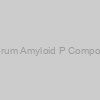 Guinea Pig Serum Amyloid P Component ELISA kit |
|
E01A42735 |
BlueGene |
96T |
EUR 700 |
|
Description: ELISA |
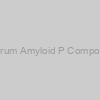 Guinea pig Serum Amyloid P Component ELISA kit |
|
E05S0234-192T |
BlueGene |
192 tests |
EUR 1524 |
|
|
|
Description: A sandwich ELISA for quantitative measurement of Guinea pig Serum Amyloid P Component in samples from blood, plasma, serum, cell culture supernatant and other biological fluids. This is a high quality ELISA kit developped for optimal performance with samples from the particular species. |
 Guinea pig Serum Amyloid P Component ELISA kit |
|
E05S0234-48 |
BlueGene |
1 plate of 48 wells |
EUR 624 |
|
|
|
Description: A sandwich ELISA for quantitative measurement of Guinea pig Serum Amyloid P Component in samples from blood, plasma, serum, cell culture supernatant and other biological fluids. This is a high quality ELISA kit developped for optimal performance with samples from the particular species. |
 Guinea pig Serum Amyloid P Component ELISA kit |
|
E05S0234-96 |
BlueGene |
1 plate of 96 wells |
EUR 822 |
|
|
|
Description: A sandwich ELISA for quantitative measurement of Guinea pig Serum Amyloid P Component in samples from blood, plasma, serum, cell culture supernatant and other biological fluids. This is a high quality ELISA kit developped for optimal performance with samples from the particular species. |
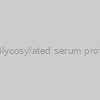 Guinea Pig Glycosylated serum protein ELISA kit |
|
E01A39754 |
BlueGene |
96T |
EUR 700 |
|
Description: ELISA |
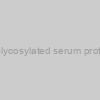 Guinea pig Glycosylated serum protein ELISA kit |
|
E05G0373-192T |
BlueGene |
192 tests |
EUR 1524 |
|
|
|
Description: A competitive ELISA for quantitative measurement of Guinea pig Glycosylated serum protein in samples from blood, plasma, serum, cell culture supernatant and other biological fluids. This is a high quality ELISA kit developped for optimal performance with samples from the particular species. |
 Guinea pig Glycosylated serum protein ELISA kit |
|
E05G0373-48 |
BlueGene |
1 plate of 48 wells |
EUR 624 |
|
|
|
Description: A competitive ELISA for quantitative measurement of Guinea pig Glycosylated serum protein in samples from blood, plasma, serum, cell culture supernatant and other biological fluids. This is a high quality ELISA kit developped for optimal performance with samples from the particular species. |
In drug therapy teams, the exercise of ALP was considerably larger than that within the management group (p<0.05); there have been important variations amongst teams wherein totally different concentrations have been used (p<0.05).
The outcomes of alizarin purple staining confirmed that calcified nodules have been shaped in all teams and that the world of calcified nodules shaped in teams handled with rutin was higher than that within the management group; the higher the focus, the bigger the world. Rutin can promote osteoblastic differentiation; and the higher the focus, the more practical it’s.
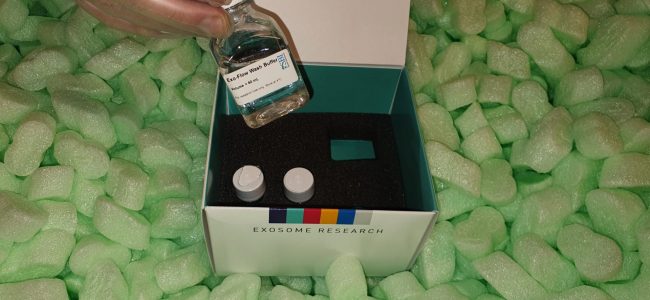
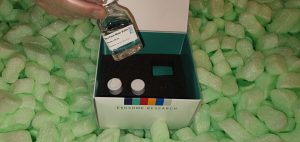
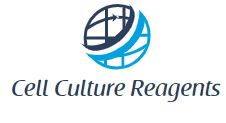
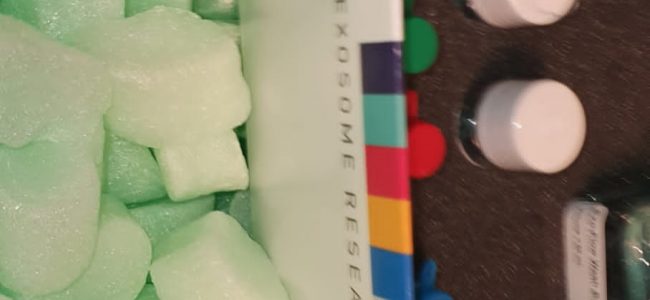
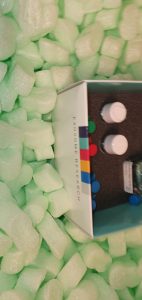
![[Effects and mechanism of sodium hydrosulfide on rat epidermal cells intervened by burned rat serum]](http://artelis.be/wp-content/uploads/2021/03/IMG-20201217-WA0003-650x300.jpg)
![[Effects and mechanism of sodium hydrosulfide on rat epidermal cells intervened by burned rat serum]](http://artelis.be/wp-content/uploads/2021/03/IMG-20201217-WA0003-300x142.jpg)
